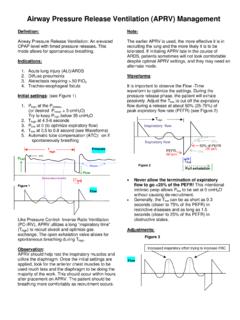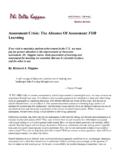Transcription of Guideline on quality of oral modified release …
1 7 Westferry Circus Canary Wharf London E14 4HB United Kingdom An agency of the European Union Telephone +44 (0)20 7418 8400 Facsimile +44 (0)20 7418 8416 E-mail Website European Medicines Agency, 2012. Reproduction is authorised provided the source is acknowledged. 23 August 2012 1 EMA/492713/2012 2 quality Working Party (QWP) 3 Guideline on quality of oral modified release products 4 Draft 5 Draft Agreed by QWP May 2012 Adoption by CHMP for release for consultation 19 July 2012 Start of public consultion 15 September 2012 End of consultation (deadline for comments) 15 March 2013 6 This Guideline together with the Guideline on quality of Transdermal Patches replaces Note for Guidance 7 on modified release products: A: oral dosage Forms B: Transdermal Dosage Forms.
2 Part I ( quality ). 8 9 Comments should be provided using this template. The completed comments form should be sent to 10 Keyword oral dosage form, modified release Guideline on quality of oral modified release products EMA/492713/2012 Page 2/16 Guideline on quality of oral modified release products 11 Table of contents 12 1. Introduction .. 3 13 Preamble .. 3 14 Scope .. 3 15 2. Prolonged release oral dosage forms .. 3 16 Development pharmaceutics .. 3 17 General remarks .. 3 18 Therapeutic objectives and principle of the release system .. 4 19 Development of dissolution methods.
3 4 20 Discriminatory power of the dissolution test .. 6 21 Bioavailability study .. 6 22 Comparison of dissolution profiles .. 6 23 In vitro-in vivo comparison .. 7 24 Setting specifications .. 8 25 Control strategy .. 9 26 Variations to products .. 9 27 3. Delayed release dosage forms .. 9 28 Development pharmaceutics .. 10 29 Setting specifications .. 10 30 Control Strategy .. 11 31 Variations to products .. 11 32 Annex 1 .. 12 33 Annex 2 .. 15 34 Guideline on quality of oral modified release products EMA/492713/2012 Page 3/16 1. Introduction 35 Preamble 36 Pharmaceutical dosage forms may be developed in which the rate and/or place of release of active 37 substance(s) has in some way been modified compared with conventional release formulations.
4 Such 38 modifications may have a number of objectives, such as maintaining therapeutic activity for an extended 39 time, reducing toxic effects, protecting the active substance against degradation due to low pH, targeting 40 the active substance to a predefined segment of the gastrointestinal tract for local treatment or targeting 41 active substance release at specified time-points. 42 This section I document covers the various parts of the application for Marketing Authorization related to 43 quality and should be read in conjunction with section II of this NfG relating to clinical aspects.
5 44 Furthermore, it is clear that this NfG cross-references to other quality guidelines and to official 45 compendia. 46 For clear definitions on the terminology used to describe different types of release models and other 47 definitions, reference is made to Annex I. 48 Scope 49 This NfG concerns quality aspects, especially pharmaceutical development and in vitro testing, of dosage 50 forms in which the release of active substance is modified . This Guideline only covers delayed release oral 51 dosage forms with the principle of gastro-resistance and prolonged release oral dosage forms.
6 Pulsatile 52 and accelerated release dosage forms are not covered by the current Guideline . Delayed release dosage 53 forms with other principles, including those designed to release in a specific area of the gastrointestinal 54 tract in response to a specific trigger ( enzymes) or at specific time(s) after ingestion are not 55 specifically addressed. 56 Many principles discussed under paragraph 2 with respect to prolonged release oral dosage forms will be 57 relevant to other modified release dosage forms intended for oral administration or via other routes. 58 2. Prolonged release oral dosage forms 59 Development pharmaceutics 60 General remarks 61 The quality of a prolonged release dosage form is continuously improved during the development of a new 62 drug product .
7 The choice of the composition is normally made early in the development based on 63 small-scale batches and takes into account physicochemical properties of the drug substance, stability 64 and drug absorption characteristics throughout the gastrointestinal tract. As soon as the constituents are 65 chosen, gradual scaling up of the manufacturing process will start. During this period it is reasonable to 66 expect that adjustments will be necessary to reach full-scale production. These adjustments might be 67 changes in composition, manufacturing processes, equipment or manufacturing site.
8 68 In some cases these adjustments may have an effect on the properties of the drug product . It is therefore 69 recommended that an in vitro dissolution test is developed which is able to detect changes which may 70 have an effect on the efficacy or safety of the product . 71 Guideline on quality of oral modified release products EMA/492713/2012 Page 4/16 Pharmaceutical development should establish the link from pharmacokinetic parameters through in vivo 72 drug release to in vitro dissolution rate. 73 The formulation chosen in early development should be tested under different dissolution conditions to 74 determine its sensitivity/robustness to the expected physiological environment after administration.
9 The 75 discriminatory power of the test conditions chosen for routine control may be determined by comparison 76 of the in vitro dissolution data and the bioavailability data of the different formulations. If a Level A in 77 vivo-in vitro correlation (IVIVC) is established, the dissolution test - after proper validation - can be used 78 as a qualifying control method with in vivo relevance, while in the absence of a Level A IVIVC the 79 dissolution test can be used only as a quality control method. 80 After completed scale-up it is reasonable to compare the laboratory/pilot scale batches with the full 81 production scale batches in a bioavailability study if the scale-up factor exceeds 10 (compared to the 82 laboratory/pilot scale biobatch) in order to verify that the dissolution test conditions chosen are 83 appropriate for the release of clinical materials, scale-up and manufacture (see also and and 84 ).
10 85 Therapeutic objectives and principle of the release system 86 The therapeutic objectives and rationale of the prolonged release product should be provided. 87 Pharmacokinetic ( AUC, Cmax, Tmax, t1/2) and physico-chemical characteristics of the active substance 88 ( solubility at different pH, partition coefficient, particle size, polymorphism) relevant to the 89 development of the product should be given. Detailed information on the release controlling excipient(s) 90 should be given. Reference is made to the guidelines on pharmaceutical development. 91 The following characteristics of the prolonged release system should be described: 92 the manner in which prolonged release is intended to be achieved (membrane type, matrix, etc.)














